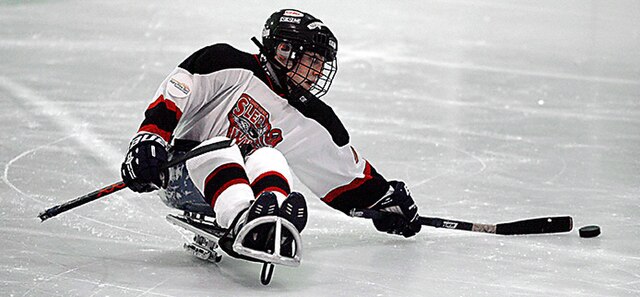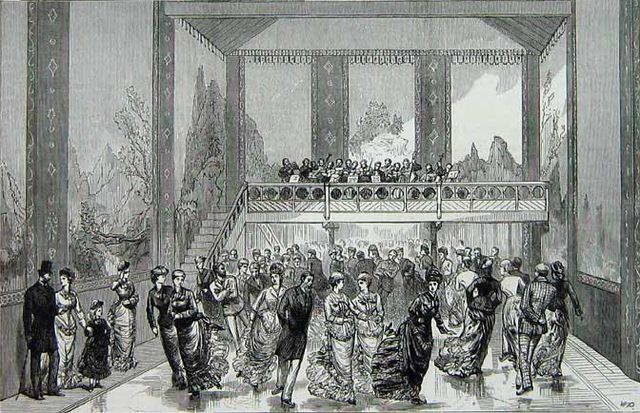Sledge hockey, also known as Sled hockey in American English, and Para ice hockey in international competition, is an adaptation of ice hockey for players who have a physical disability. The sport was invented in the early 1960s at a rehabilitation centre in Stockholm, Sweden, and played under similar rules to standard ice hockey. Players are seated on sleds and use special hockey sticks with metal "teeth" on the tips of their handles to navigate the ice. Playing venues use an ice hockey rink.
A player handling the puck
Canadian men's and U.S. men's players competing at the 2015 World Sled Hockey Challenge.
Shayba Arena in its para ice hockey configuration at the 2014 Winter Paralympics: the entrance to the players' benches and penalty boxes are flush with the ice surface, to make it easier for players to enter them. The floors are coated in ice or smooth plastic to prevent damage to the sledges.
Carbon fiber sledge hockey sticks
An ice rink is a frozen body of water and/or an artificial sheet of ice where people can ice skate or play winter sports. Ice rinks are also used for exhibitions, contests and ice shows. The growth and increasing popularity of ice skating during the 1800s marked a rise in the deliberate construction of ice rinks in numerous areas of the world.
Interior of the Glaciarium in 1876
Ice rink in Amsterdam c. 1900, from the Amsterdam City Archives
1894–1895: North Avenue Ice Palace skating rink in Baltimore, Maryland
1901: St. Nicholas Rink, New York City








